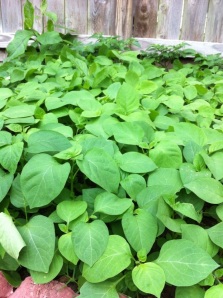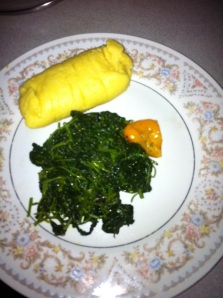
I am totally doing the germination dance to celebrate the sprouting of the Scent Leaf seeds I am growing for the first time ever! The seeds sprouted about 10 days after sowing. (If you want to see the best way to sow the seeds to ensure germination, I have a video on my youtube channel).

Let me tell you a little about the Scent leaf. It is a culturally important herb for many tribes in central and west Africa. The scientific name for Scent leaf is Occimum gratissimum. Scent leaf is also known as efirin, nchanwu, African Basil, Holy Basil, tulsi vana etc. In Cameroon we know it as Masepu. Ghanaians call it Numum.
The plant is called Scent leaf because of its strong aromatic smell. It has nutritional and medicinal properties. It is rich in vitamin A and used to treat many ailments in Africa.
The leaves can be added to soups and other dishes to enhance the taste. Scent leaf is very flavorful and is used in cooking pepper soup, banga soup, yam porridge and more.
Scent Leaf Planting Tips:
Scent leaf loves full sun for germination and growth. It can grow up to 5 feet! If you are growing your garden in colder climates you want to start the seeds indoors about 6 weeks before your last frost date. Scent leaf seeds are tiny, so it is best to sow on the surface of moist potting soil and do not cover. Keep lightly moist until germination. Transplant outdoors during hot summer months. May sow seeds outdoors during hot summer months under full sun.
I hope you grow this important herb. You can buy the seeds here, and follow my garden channel to learn how to grow Scent Leaf and other culturally important African vegetables abroad.
Grow a Garden. Grow Health!
































